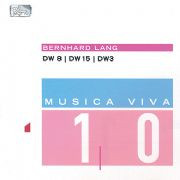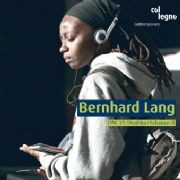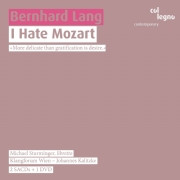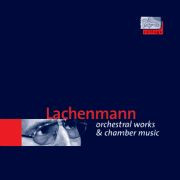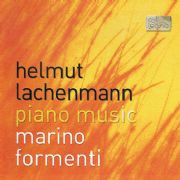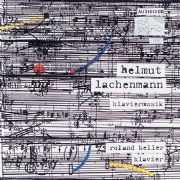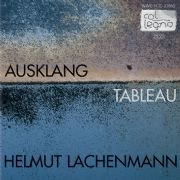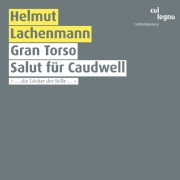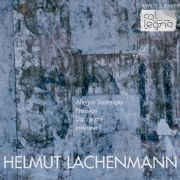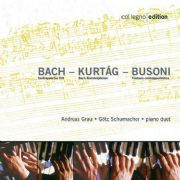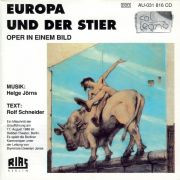★Col Legno
Works for Piano and Cembalo
The pieces for piano/cembalo on this CD include the first two Capriccios by the 24-year-old Ligeti, the Musica ricercata, and the first volume of the legendary Études, in brilliant interpretations by the German pianist Erika Haase. Ligeti was a master in how to make tricky compositional systems appear as more than just that by inspiring them with sensual substance: that's what distinguishes the artist from the artisan. Throughout his life Ligeti kept his ears pricked up and his senses sharpened …
missa beati pauperes spiritu
In cooperation with IEM Graz and musikprotokoll 2005 (steirischer herbst, ORF). Excursion into the Middle Ages: Klaus Lang’s latest composition breathes new life into Gregorian chant more than a thousand years old. One hears the traditional sequence of the mass movements, but newly composed material gives it a new interpretation. Klaus Lang does not wish to evoke images in his listeners but rather empty and impoverish their minds.
Musica Viva 10
“The first pieces of the Differenz/Wiederholungs-Serie were composed by transcribing loop techniques of different turntable lists and filmmakers … What appealed to me especially was the concept of erratic, asymmetric loops corresponding to the crack in the groove or to the trembling of a malfunctioning CD player.” This idea has already spawned many parts of the DW, which bring to the fore a great variety of different phenomena of our noisy, sound-generating lives. In DW 8, the orchestra, “like t…
DW 17: Doubles / Schatten II
The unfolding of the differences is succeeded by ever new ramifications, versions, series. DW 17 Doubles/Schatten II as a new phase in the DW-Kosmos.
I Hate Mozart
"Why do I have to sing Mozart all the time?", the tenor in Bernhard Lang's opera "I hate Mozart" cries out in despair. Well, why always listen to Mozart operas and not an opera of the early 21st century for a change? With their provocatively named contribution to the Viennese Mozart Year 2006, composer Bernhard Lang and librettist Michael Sturminger succeeded in creating a parody of the opera business that loses none of its sharp wit in the CD recording. The "backstage insights" supplied on DVD …
FADENKREUZE
For Elmar Lampson, composition and the phenomenology of music overlap as disciplines, and attentive listening is as critical to his works' reception as is analysis of their carefully timed structures or pitch content. Lampson's String Quartet No. 2 (1992-1998) operates on several aural planes, some near and easy to distinguish, and others more remote and indistinct. The material shifts between active, atonal flurries and soft, almost lyrical passages of modal simplicity, and the extremely soft d…
Orchestral Works & Chamber Music
Hardly any other composer has ever been as far removed from conservatism as Helmut Lachenmann. In all his oeuvre his listeners are never permitted to lean back comfortably even for a moment in expectation of the well-known and familiar. Again and again Lachenmann succeeded, and still succeeds, in shaking the "aesthetic apparatus," the system of conventional formulas and phrases established throughout decades and centuries, to its very foundations. Intérieur I (1966), a piece for percussion solo,…
Piano Music
Music as a message without words from far away – from our inner selves. Piano music as metaphor for the thrilling adventures of human existence.
Klaviermusik
The sovereign and immediate approach Lachenmann takes in his Fünf Variationen über ein Thema von F. Schubert (1956) lends Schubert's slight Deutsche Tanz D 643a special and almost heroic flavor. But only five years later, Lachenmann had already travelled a considerable distance since those days as his Echo Andante of 1961 shows. Like Wiegenmusik (1963), the piece has been shaped by Lachenmann's studies with Luigi Nono whose influence and inspiration are clearly audible. A perfect example of the …
Ausklang / Tableau
The title Ausklang (Final Notes, or Fading Away) is intended to be understood literally. Lachenmann's Musik für Klavier und Or-chester is centrally concerned with final notes and sounds fading away. In particular, it is concerned with piano sounds created with certain techniques (playing silently at the keyboard, special ways of operating the piano pedals, etc.). It is also concerned with the fading away of sound as the sounds of the piano are being picked up by the orchestra just as they are ab…
Gran Torso / Salut für Caudwell
In 1988 the first issue of these recordings of Gran Torso and Salut für Caudwell was awarded the Preis der Deutschen Schallplattenkritik (German Record Critics' Award); and neither compositions nor recordings have lost any of their value up to today. In Gran Torso, Lachenmann tried to explore the “mechanic and energetic conditions of sound production”. This resulted in singular, unusual sounds which simultaneously exploded the barriers of audibility, playing technique and sound as such. The guit…
Allegro Sostenuto / Pression / Dal Niente / Intérieur I
Both Sostenuto and Dal niente were composed for the clarinetist Eduard Brunner. “As in the earlier Ausklang for piano and orchestra, the musical material is determined by the interplay of the experiences of resonance on the one hand and motion on the other. Both aspects of sound encounter one another in the conception of structure as a multiply ambivalent ‘arpeggio’, i.e. as a process of construction, deconstruction and reconstruction – experienced in temporal succession – which is conveyed both…
Visions de l\'Amen
Last things and Christian visions: György Kurtág's reflections on Heinrich Schütz, and Olivier Messiaen in search of the "Amen."
Piano Duet
Before the epigones take over the stage we are given a chance to hear out Bach himself: the unfinished four-voice Contrapunctus XIV from the Art of the Fugue marks the starting point of Andreas Grau's and Götz Schumacher's remarkable exploration of the Bach cosmos. In the Berlin autograph of the Contrapunctus XIV the place where the score breaks off is marked by an inscription: "At the point where the name BACH is introduced in the countersubject to this fugue, the composer died." Even though fr…
Violin Concertos
The exceptional violinist Patricia Kopatchinskaja not only impresses audiences and critics – she also inspires eminent composers like Kühr, Resch & Zykan.
Nocturnal Walks
The truth is out: Haydn was a jazz composer! Franz Koglmann took the diligent classic's 27th symphony with him on his Nocturnal Walks.
Lo-lee-ta
Vladimir Nabokov: the master of "chamber music in prose" (literary critic Marcel Reich-Ranicki) and composer of crackling word sonatas. Franz Koglmann: a commuter between jazz/avant-garde and literature, and writer of intimate sound novellas. It was only a matter of time before Koglmann would create "Music on Nabokov," and transform literary motifs and characters into music. Together with his Monoblue Quartet (Tony Coe, clarinet/saxophone, Ed Renshaw, guitar, Peter Herbert, bass) the trumpeter K…
Hommage à Paul Klee
With his Pedagogical Sketchbook often regarded as a virtual manual in composition, Paul Klee has exerted a far-reaching influence on modern music. Few composers were so profoundly affected as Sándor Veress, whose encounter with Klee's work after fleeing Hungary in 1949 gave rise to seven fantasies that range from the Bachian gravity of 'Old Sound' and the intensely elegiac 'Green in Green' to the rhythmic playfulness of 'Stone Collection'. Grau and Schumacher give a committed performance, differ…
Europa und der Stier
Myths are human experiences congealed into fables. Rolf Schneider, expelled from the GDR Writers' Association in 1979, presents the story of Europa and the bull as a dirty joke, a great comical love story, the story of a girl used and discarded by a macho, a defeat with a disastrous outcome. Composer Helge Jörns has clothed the plot in chamber music of an aggressive clarity, developing the – both logical and precise – formal division with exceptional skill out of the dramatic requirements: "Form…
Orte und Zeiten/Tempi e Luoghi
While traveling through time in Italy and Germany, Thomas Jahn was particularily intrigued by the “culture of resistance”. The poems underlying the cycle are all concerned with resistance – resistance against war, against the lack of affection and against inhumanity: “He finds its remnants, so prevalent in Italian folklore, also in German lyric poetry.” (Hans-Werner Heister) Some of the texts alternate between German and Italian, sometimes even within the space of a single phrase or word. The pr…


